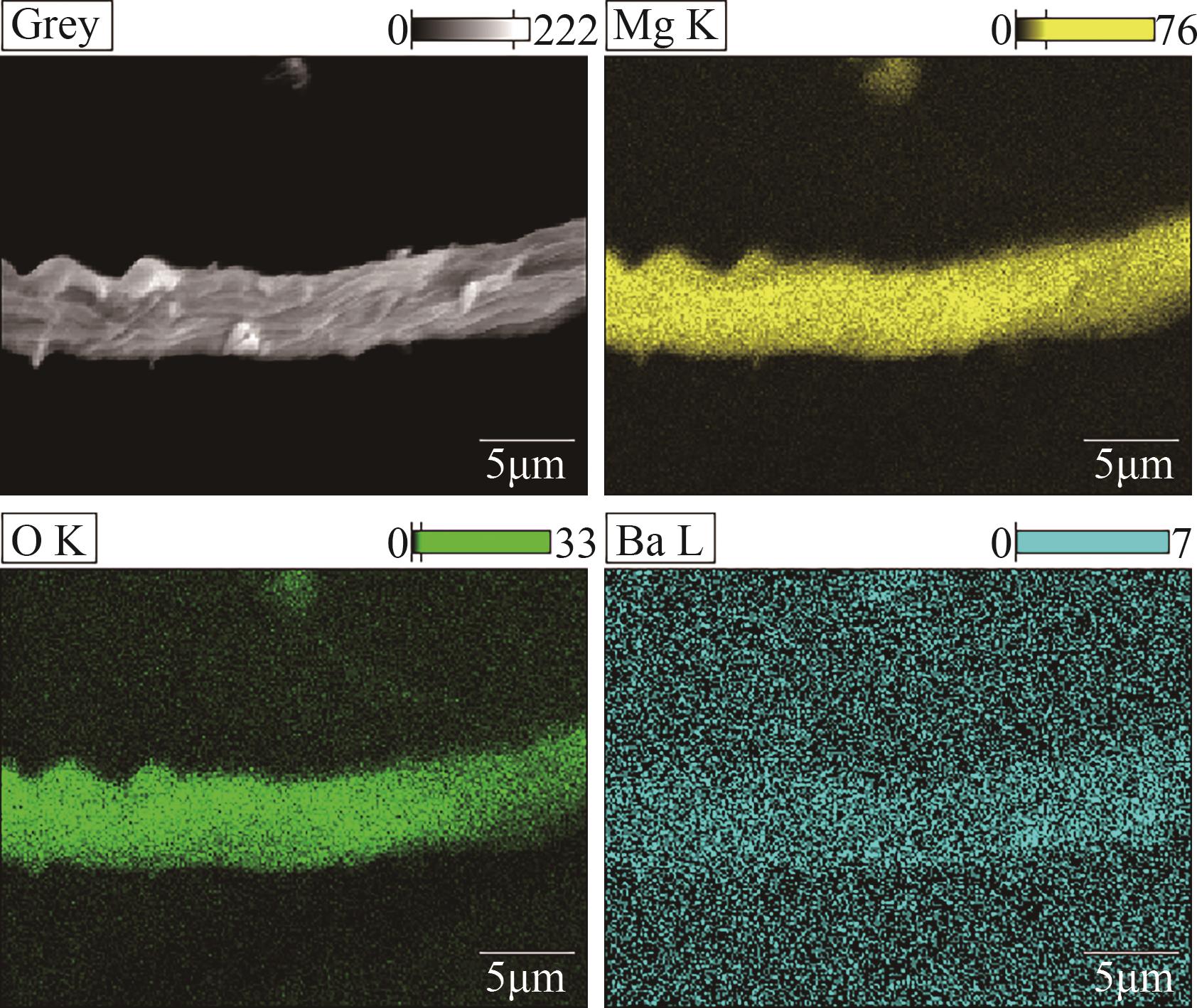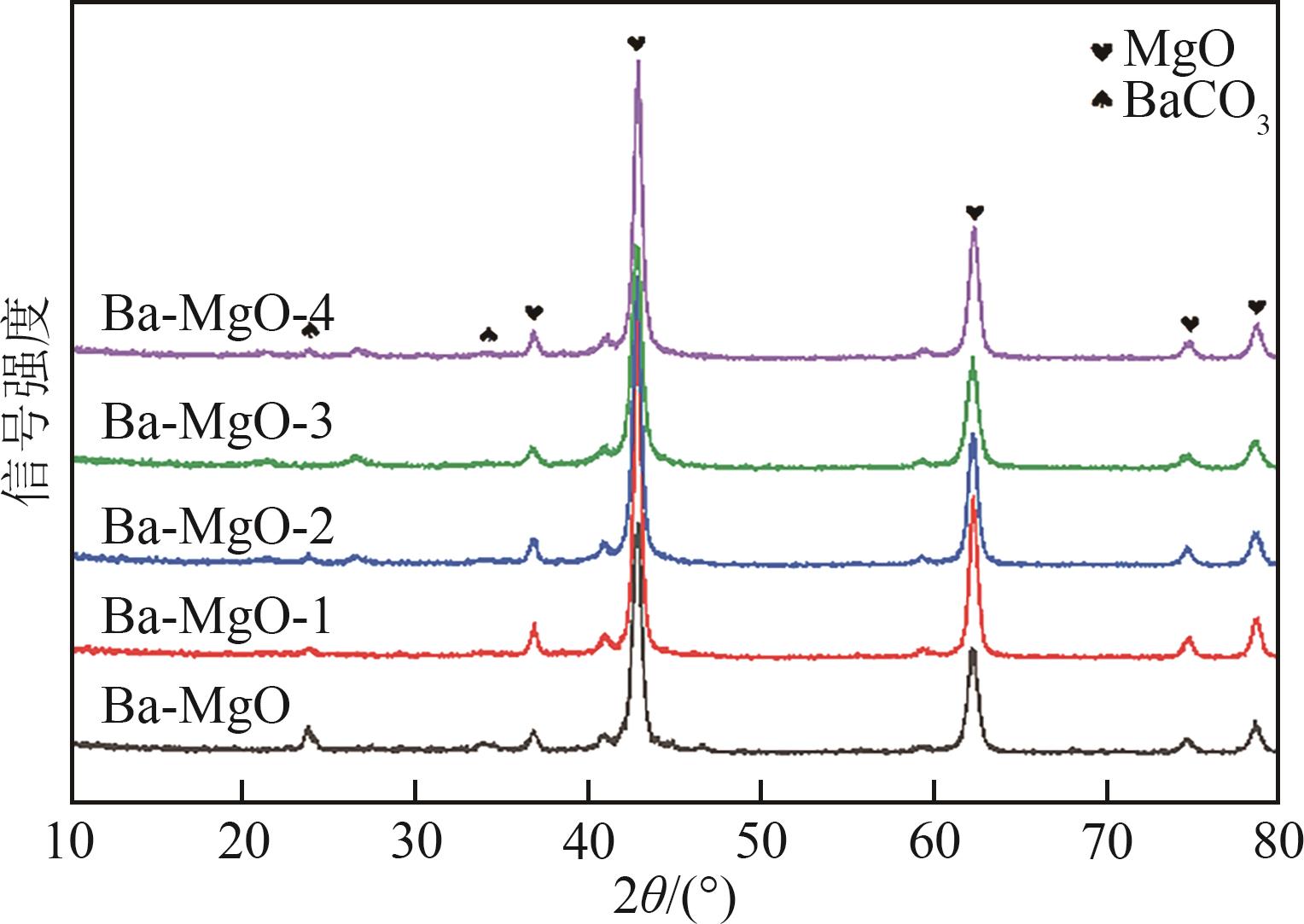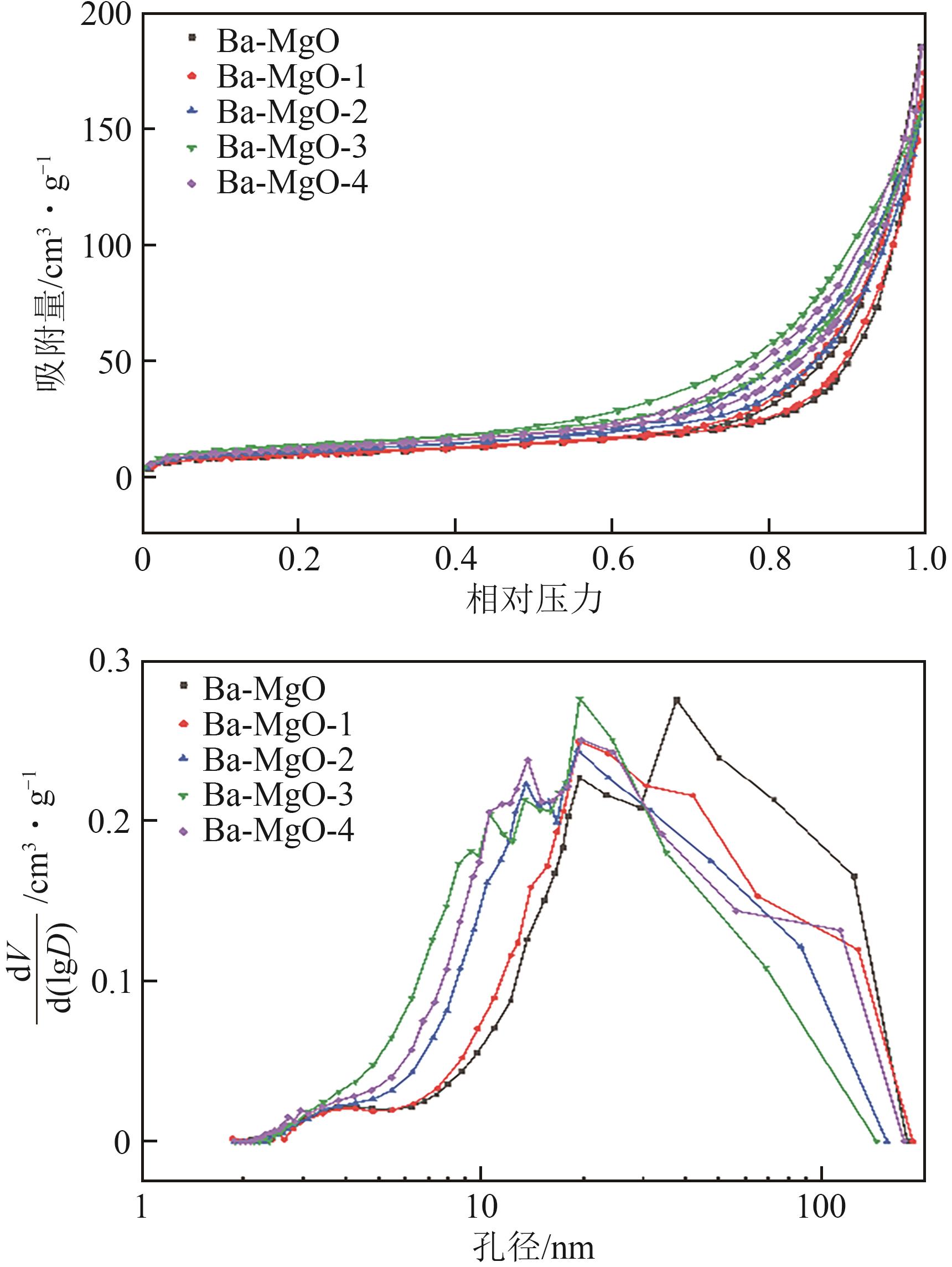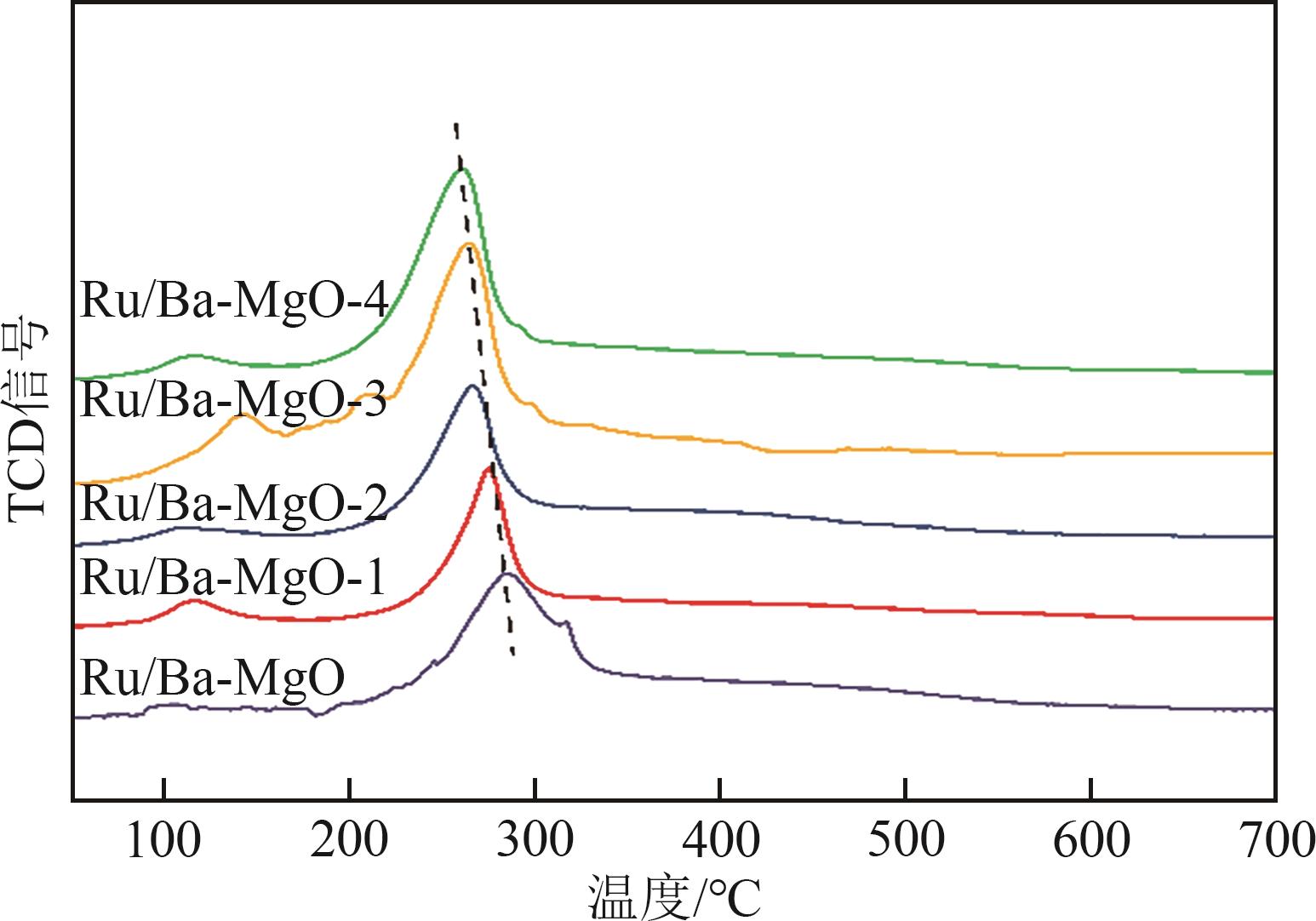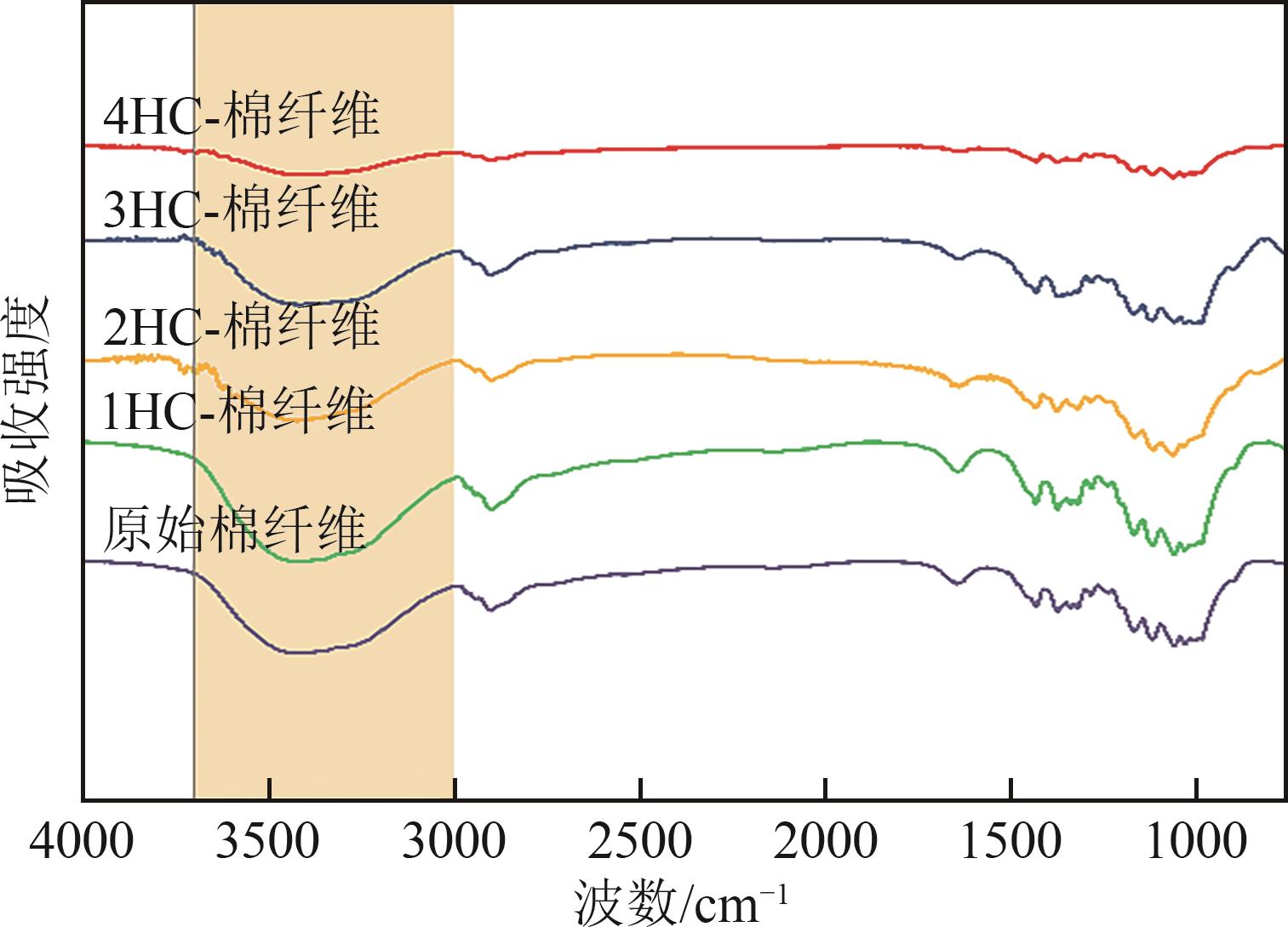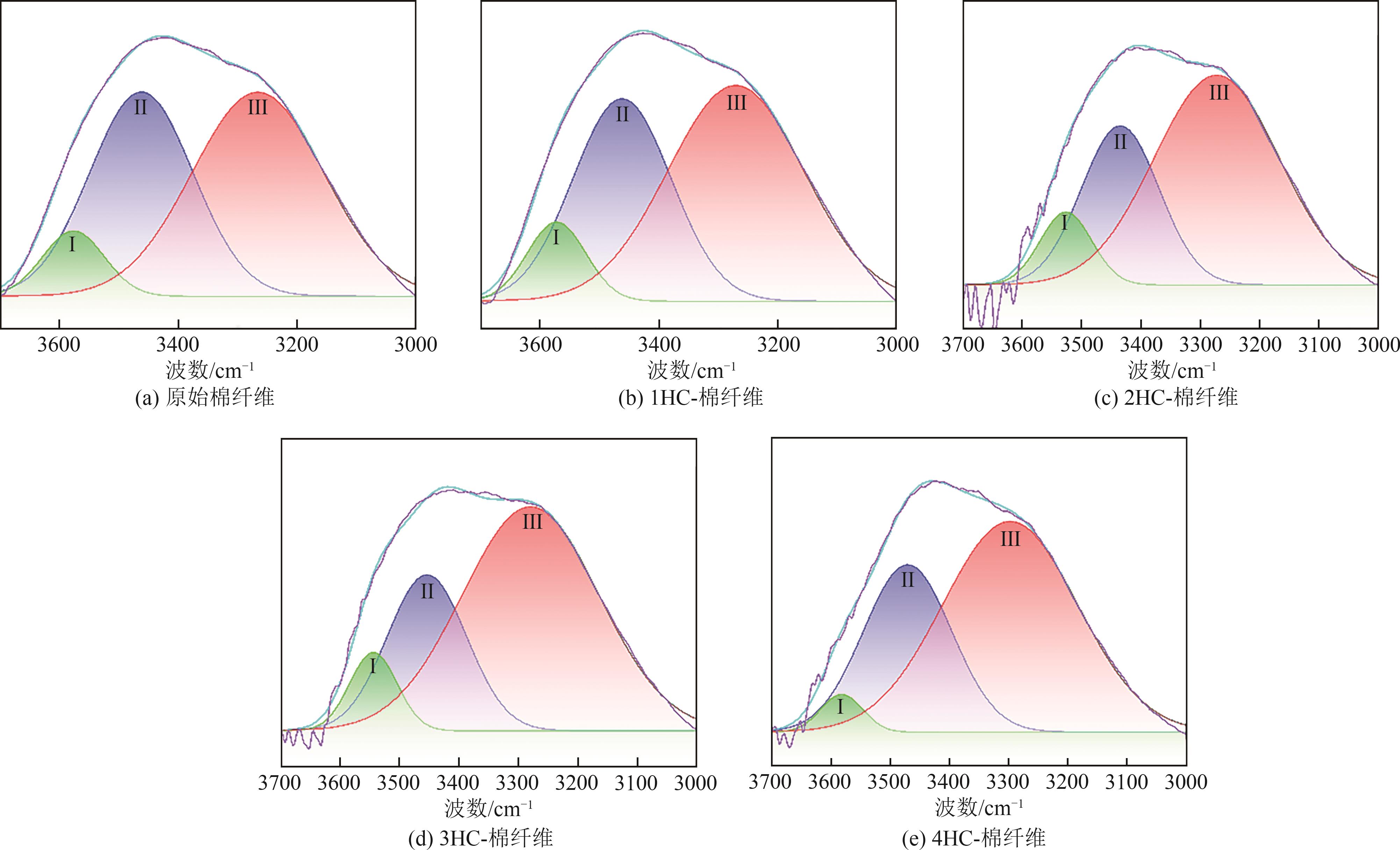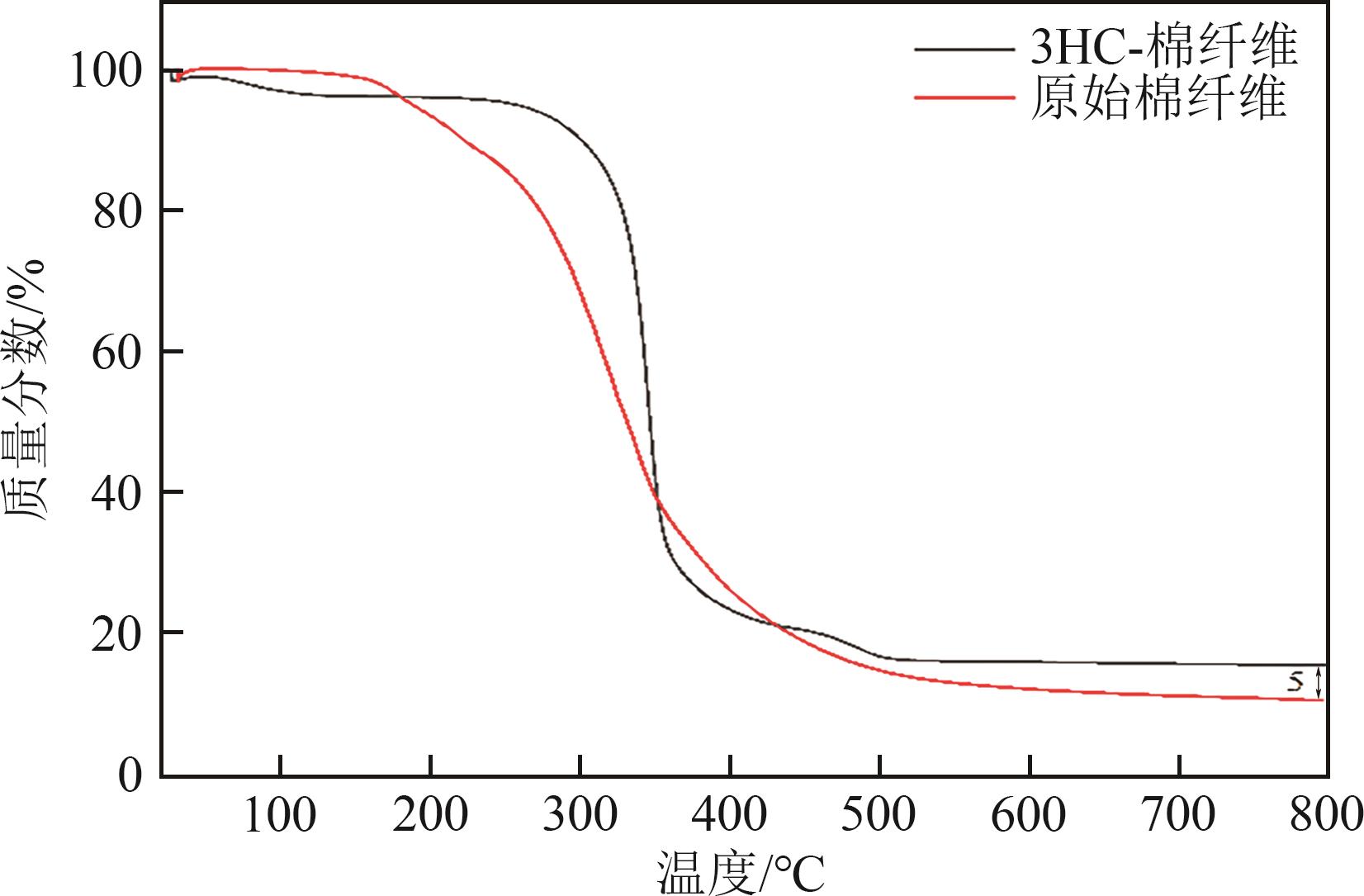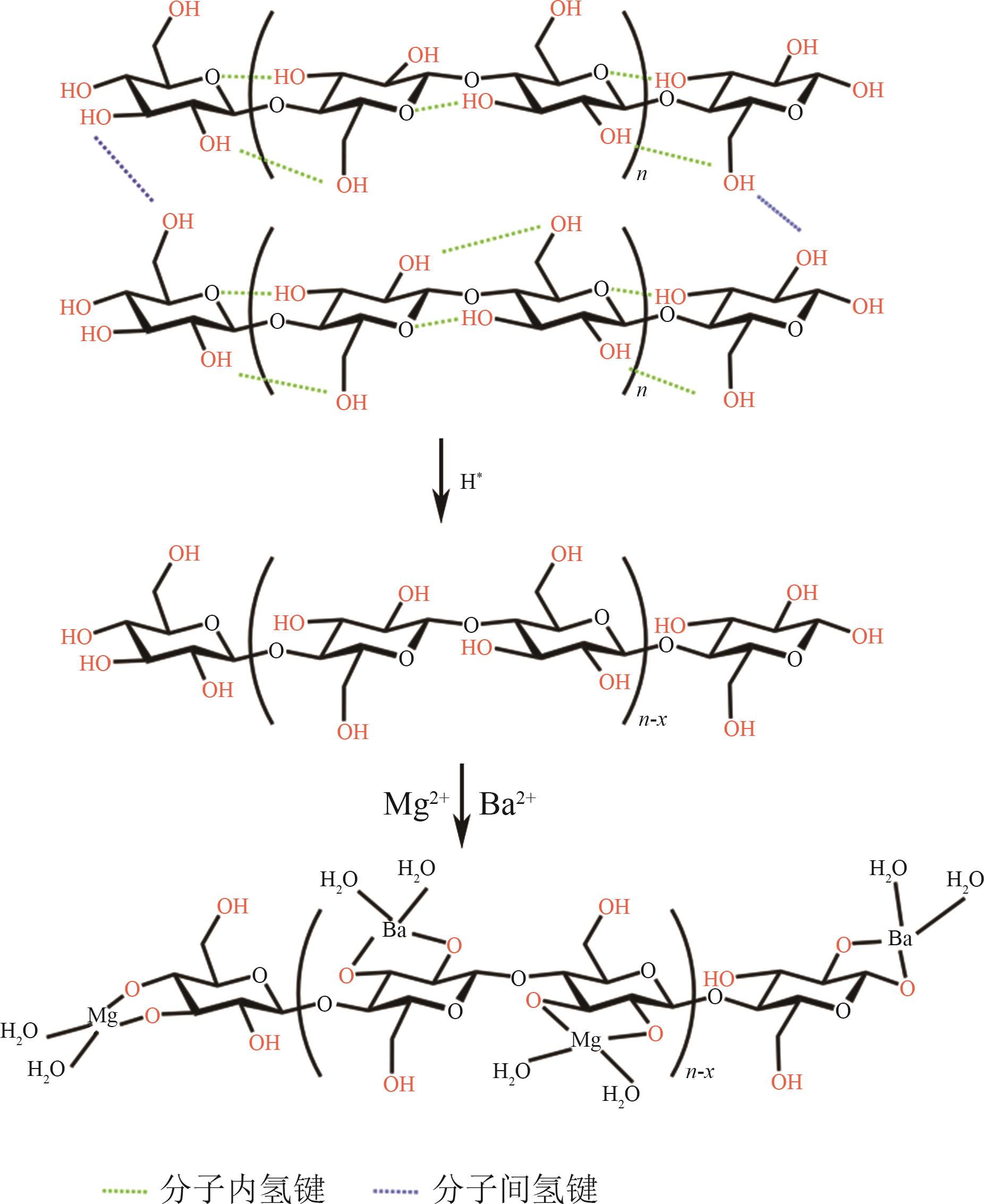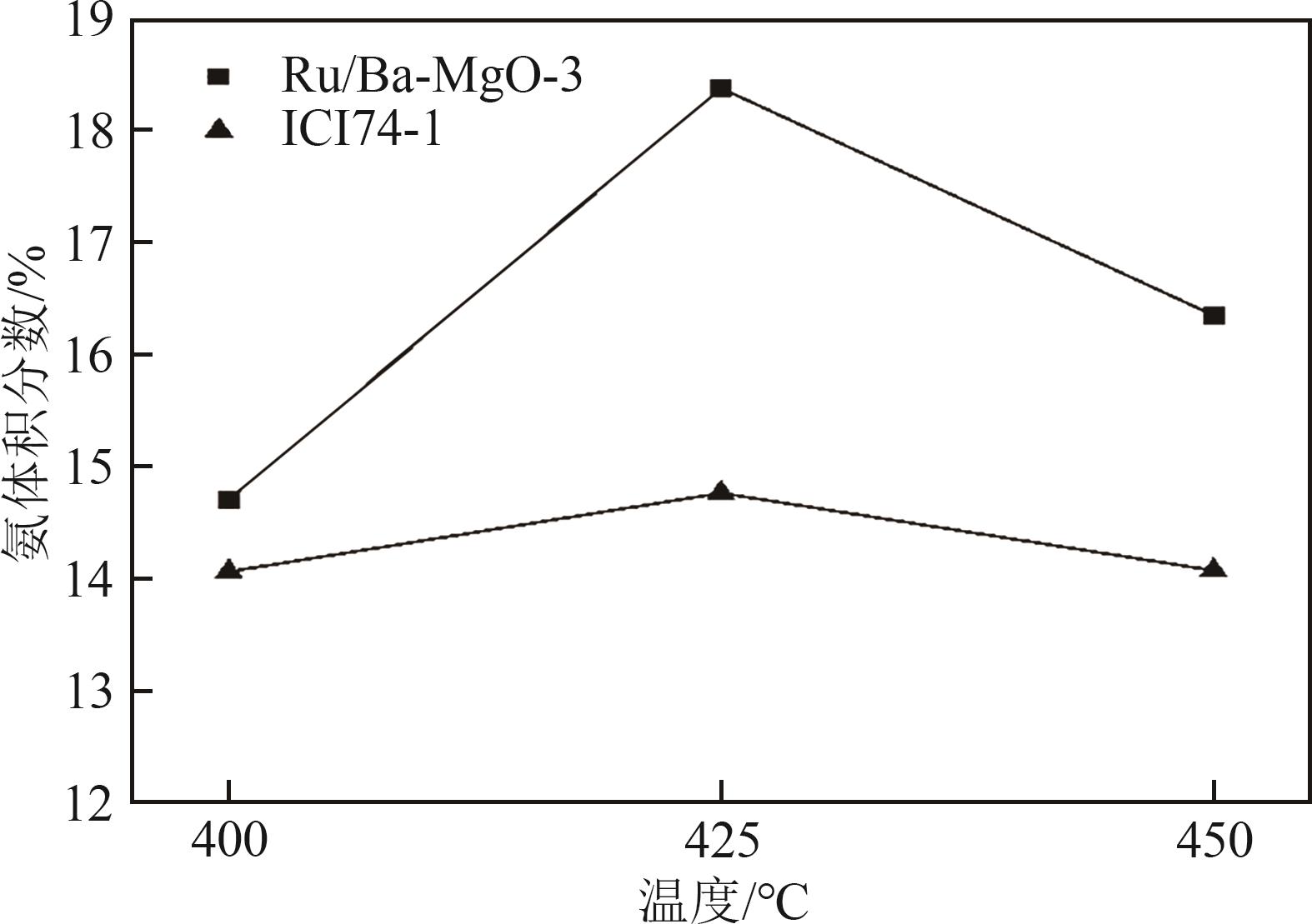Chemical Industry and Engineering Progress ›› 2024, Vol. 43 ›› Issue (2): 962-970.DOI: 10.16085/j.issn.1000-6613.2023-0282
• Industrial catalysis • Previous Articles Next Articles
Effect of hydrochloric acid treatment on catalytic performance of Ru/Ba-MgO catalyst template cotton fiber
DING Kang( ), HE Junqiao, CHEN Yuanjie, YANG Xiazhen, LIU Huazhang, HUO Chao(
), HE Junqiao, CHEN Yuanjie, YANG Xiazhen, LIU Huazhang, HUO Chao( )
)
- College of Chemical Engineering, Zhejiang University of Technology, Hangzhou 310014, Zhejiang, China
-
Received:2023-02-28Revised:2023-05-23Online:2024-03-07Published:2024-02-25 -
Contact:HUO Chao
Ru/Ba-MgO氨合成催化剂模板棉纤维的盐酸处理对催化性能的影响
丁康( ), 何军桥, 陈元捷, 杨霞珍, 刘化章, 霍超(
), 何军桥, 陈元捷, 杨霞珍, 刘化章, 霍超( )
)
- 浙江工业大学化学工程学院,浙江 杭州 310014
-
通讯作者:霍超 -
作者简介:丁康(1996—),男,硕士研究生,研究方向为合成氨。E-mail:2112001067@zjut.edu.cn。 -
基金资助:浙江省自然科学基金(LY18B060015);浙江工业大学横向项目(KYY-HX-20230404)
CLC Number:
Cite this article
DING Kang, HE Junqiao, CHEN Yuanjie, YANG Xiazhen, LIU Huazhang, HUO Chao. Effect of hydrochloric acid treatment on catalytic performance of Ru/Ba-MgO catalyst template cotton fiber[J]. Chemical Industry and Engineering Progress, 2024, 43(2): 962-970.
丁康, 何军桥, 陈元捷, 杨霞珍, 刘化章, 霍超. Ru/Ba-MgO氨合成催化剂模板棉纤维的盐酸处理对催化性能的影响[J]. 化工进展, 2024, 43(2): 962-970.
share this article
Add to citation manager EndNote|Ris|BibTeX
URL: https://hgjz.cip.com.cn/EN/10.16085/j.issn.1000-6613.2023-0282
| 催化剂 | C | O | Mg | Ba | Ru |
|---|---|---|---|---|---|
| Ru/Ba-MgO | 1.26 | 43.42 | 52.02 | 0.95 | 2.35 |
| Ru/Ba-MgO-1 | 2.01 | 40.38 | 52.96 | 2.51 | 2.14 |
| Ru/Ba-MgO-2 | 3.02 | 41.02 | 51.07 | 3.01 | 1.88 |
| Ru/Ba-MgO-3 | 2.23 | 42.90 | 48.95 | 3.95 | 1.97 |
| Ru/Ba-MgO-4 | 2.47 | 39.42 | 52.34 | 3.82 | 1.95 |
| 催化剂 | C | O | Mg | Ba | Ru |
|---|---|---|---|---|---|
| Ru/Ba-MgO | 1.26 | 43.42 | 52.02 | 0.95 | 2.35 |
| Ru/Ba-MgO-1 | 2.01 | 40.38 | 52.96 | 2.51 | 2.14 |
| Ru/Ba-MgO-2 | 3.02 | 41.02 | 51.07 | 3.01 | 1.88 |
| Ru/Ba-MgO-3 | 2.23 | 42.90 | 48.95 | 3.95 | 1.97 |
| Ru/Ba-MgO-4 | 2.47 | 39.42 | 52.34 | 3.82 | 1.95 |
| 条件 | C | O | Mg | Ba | Ru |
|---|---|---|---|---|---|
| 评价前 | 2.23 | 42.90 | 48.95 | 3.95 | 1.97 |
| 评价后 | 1.69 | 42.48 | 49.88 | 3.93 | 2.02 |
| 条件 | C | O | Mg | Ba | Ru |
|---|---|---|---|---|---|
| 评价前 | 2.23 | 42.90 | 48.95 | 3.95 | 1.97 |
| 评价后 | 1.69 | 42.48 | 49.88 | 3.93 | 2.02 |
| 载体 | 比表面积/m2·g-1 | 孔径/nm | 孔容/cm3·g-1 | 平均晶粒度/nm |
|---|---|---|---|---|
| Ba-MgO | 33 | 31.22 | 0.26 | 18.7 |
| Ba-MgO-1 | 34 | 27.41 | 0.23 | 17.3 |
| Ba-MgO-2 | 39 | 23.39 | 0.23 | 16.4 |
| Ba-MgO-3 | 47 | 19.69 | 0.23 | 14.9 |
| Ba-MgO-4 | 44 | 23.78 | 0.26 | 15.9 |
| 载体 | 比表面积/m2·g-1 | 孔径/nm | 孔容/cm3·g-1 | 平均晶粒度/nm |
|---|---|---|---|---|
| Ba-MgO | 33 | 31.22 | 0.26 | 18.7 |
| Ba-MgO-1 | 34 | 27.41 | 0.23 | 17.3 |
| Ba-MgO-2 | 39 | 23.39 | 0.23 | 16.4 |
| Ba-MgO-3 | 47 | 19.69 | 0.23 | 14.9 |
| Ba-MgO-4 | 44 | 23.78 | 0.26 | 15.9 |
| 催化剂 | 峰位置/℃ | 峰面积 | 总峰面积 |
|---|---|---|---|
| Ru/Ba-MgO | 108.5 | 3.5 | 101.1 |
| 283.9 | 97.6 | ||
| Ru/Ba-MgO-1 | 114.2 | 6.6 | 56.7 |
| 275.2 | 50.1 | ||
| Ru/Ba-MgO-2 | 108.5 | 4.9 | 72.2 |
| 266.2 | 67.3 | ||
| Ru/Ba-MgO-3 | 142.7 | 8.2 | 82.6 |
| 264.1 | 74.4 | ||
| Ru/Ba-MgO-4 | 112.7 | 4.6 | 82.2 |
| 260.7 | 77.6 |
| 催化剂 | 峰位置/℃ | 峰面积 | 总峰面积 |
|---|---|---|---|
| Ru/Ba-MgO | 108.5 | 3.5 | 101.1 |
| 283.9 | 97.6 | ||
| Ru/Ba-MgO-1 | 114.2 | 6.6 | 56.7 |
| 275.2 | 50.1 | ||
| Ru/Ba-MgO-2 | 108.5 | 4.9 | 72.2 |
| 266.2 | 67.3 | ||
| Ru/Ba-MgO-3 | 142.7 | 8.2 | 82.6 |
| 264.1 | 74.4 | ||
| Ru/Ba-MgO-4 | 112.7 | 4.6 | 82.2 |
| 260.7 | 77.6 |
| 催化剂 | Ru分散度/% | Ru颗粒尺寸/nm |
|---|---|---|
| Ru/Ba-MgO | 27.2 | 5.0 |
| Ru/Ba-MgO-1 | 31.7 | 4.2 |
| Ru/Ba-MgO-2 | 33.7 | 4.0 |
| Ru/Ba-MgO-3 | 51.3 | 2.6 |
| Ru/Ba-MgO-4 | 42.4 | 3.2 |
| 催化剂 | Ru分散度/% | Ru颗粒尺寸/nm |
|---|---|---|
| Ru/Ba-MgO | 27.2 | 5.0 |
| Ru/Ba-MgO-1 | 31.7 | 4.2 |
| Ru/Ba-MgO-2 | 33.7 | 4.0 |
| Ru/Ba-MgO-3 | 51.3 | 2.6 |
| Ru/Ba-MgO-4 | 42.4 | 3.2 |
| 样品 | 结晶度/% | 纤维素聚合度 | 纤维素质量分数/% |
|---|---|---|---|
| 原始棉纤维 | 91.29 | 3980 | 92.19 |
| 1HC-棉纤维 | 89.67 | 2234 | 92.54 |
| 2HC-棉纤维 | 80.38 | 1585 | 92.77 |
| 3HC-棉纤维 | 81.54 | 1258 | 92.94 |
| 4HC-棉纤维 | 85.33 | 1146 | 93.67 |
| 样品 | 结晶度/% | 纤维素聚合度 | 纤维素质量分数/% |
|---|---|---|---|
| 原始棉纤维 | 91.29 | 3980 | 92.19 |
| 1HC-棉纤维 | 89.67 | 2234 | 92.54 |
| 2HC-棉纤维 | 80.38 | 1585 | 92.77 |
| 3HC-棉纤维 | 81.54 | 1258 | 92.94 |
| 4HC-棉纤维 | 85.33 | 1146 | 93.67 |
| 样品 | 峰类型 | 波数 /cm-1 | 峰面积 百分比/% | 峰(Ⅰ+Ⅱ)/峰Ⅲ 面积比 |
|---|---|---|---|---|
| 原始棉纤维 | Ⅰ | 3576.1 | 7.75 | 0.94 |
| Ⅱ | 3461.8 | 40.71 | ||
| Ⅲ | 3265.9 | 51.54 | ||
| 1HC-棉纤维 | Ⅰ | 3572 | 8.66 | 0.84 |
| Ⅱ | 3461.7 | 37.11 | ||
| Ⅲ | 3270.3 | 54.24 | ||
| 2HC-棉纤维 | Ⅰ | 3525.9 | 8.94 | 0.62 |
| Ⅱ | 3434.7 | 29.28 | ||
| Ⅲ | 3272.6 | 61.78 | ||
| 3HC-棉纤维 | Ⅰ | 3543.8 | 7.97 | 0.53 |
| Ⅱ | 3453.8 | 26.61 | ||
| Ⅲ | 3279.7 | 65.42 | ||
| 4HC-棉纤维 | Ⅰ | 3581.5 | 3.56 | 0.58 |
| Ⅱ | 3470.4 | 33.06 | ||
| Ⅲ | 3297.8 | 63.38 |
| 样品 | 峰类型 | 波数 /cm-1 | 峰面积 百分比/% | 峰(Ⅰ+Ⅱ)/峰Ⅲ 面积比 |
|---|---|---|---|---|
| 原始棉纤维 | Ⅰ | 3576.1 | 7.75 | 0.94 |
| Ⅱ | 3461.8 | 40.71 | ||
| Ⅲ | 3265.9 | 51.54 | ||
| 1HC-棉纤维 | Ⅰ | 3572 | 8.66 | 0.84 |
| Ⅱ | 3461.7 | 37.11 | ||
| Ⅲ | 3270.3 | 54.24 | ||
| 2HC-棉纤维 | Ⅰ | 3525.9 | 8.94 | 0.62 |
| Ⅱ | 3434.7 | 29.28 | ||
| Ⅲ | 3272.6 | 61.78 | ||
| 3HC-棉纤维 | Ⅰ | 3543.8 | 7.97 | 0.53 |
| Ⅱ | 3453.8 | 26.61 | ||
| Ⅲ | 3279.7 | 65.42 | ||
| 4HC-棉纤维 | Ⅰ | 3581.5 | 3.56 | 0.58 |
| Ⅱ | 3470.4 | 33.06 | ||
| Ⅲ | 3297.8 | 63.38 |
| 催化剂 | 450℃ | 425℃ | 400℃ | |||
|---|---|---|---|---|---|---|
| 耐热前活性 | 耐热后活性 | 耐热前活性 | 耐热后活性 | 耐热前活性 | 耐热后活性 | |
| Ru/Ba-MgO | 15.02 | 13.31 | 12.01 | 9.97 | 6.20 | 6.14 |
| Ru/Ba-MgO-1 | 15.32 | 15.60 | 14.68 | 14.53 | 9.08 | 9.15 |
| Ru/Ba-MgO-2 | 16.37 | 16.37 | 17.81 | 18.07 | 12.78 | 13.86 |
| Ru/Ba-MgO-3 | 16.32 | 16.35 | 17.70 | 18.37 | 13.98 | 14.71 |
| Ru/Ba-MgO-4 | 16.04 | 16.25 | 16.37 | 16.48 | 10.79 | 11.28 |
| 催化剂 | 450℃ | 425℃ | 400℃ | |||
|---|---|---|---|---|---|---|
| 耐热前活性 | 耐热后活性 | 耐热前活性 | 耐热后活性 | 耐热前活性 | 耐热后活性 | |
| Ru/Ba-MgO | 15.02 | 13.31 | 12.01 | 9.97 | 6.20 | 6.14 |
| Ru/Ba-MgO-1 | 15.32 | 15.60 | 14.68 | 14.53 | 9.08 | 9.15 |
| Ru/Ba-MgO-2 | 16.37 | 16.37 | 17.81 | 18.07 | 12.78 | 13.86 |
| Ru/Ba-MgO-3 | 16.32 | 16.35 | 17.70 | 18.37 | 13.98 | 14.71 |
| Ru/Ba-MgO-4 | 16.04 | 16.25 | 16.37 | 16.48 | 10.79 | 11.28 |
| 22 | HUO Chao, XIA Qinghua, PAN Meihua, et al. Efficient La-Ba-MgO supported Ru catalysts for ammonia synthesis[J]. Catalysis Letters, 2011, 141(9): 1275-1281. |
| 23 | ZHANG Jiafu, WANG Yixun, ZHANG Liye, et al. Understanding changes in cellulose crystalline structure of lignocellulosic biomass during ionic liquid pretreatment by XRD[J]. Bioresource Technology, 2014, 151: 402-405. |
| 24 | ZHAO H B, KWAK J H, ZHANG Z C, et al. Studying cellulose fiber structure by SEM, XRD, NMR and acid hydrolysis[J]. Carbohydrate Polymers, 2007, 68(2): 235-241. |
| 25 | HUANG C L, YU H Y, ABDSLKARIM S Y, et al. A comprehensive investigation on cellulose nanocrystals with different crystal structures from cotton via an efficient route[J]. Carbohydrate Polymers, 2022, 276: 118766. |
| 26 | 段思雨, 胡红梅, 俞建勇, 等. 稀硫酸预处理对棉纤维聚合度的影响[J]. 棉纺织技术, 2021, 49(1): 44-47. |
| DUAN Siyu, HU Hongmei, YU Jianyong, et al. Influence of dilute sulphuric acid treatment on cotton cellulose polymerization degree[J]. Cotton Textile Technology, 2021, 49(1): 44-47. | |
| 27 | 刘化章. 氨合成催化剂: 实践与理论[M]. 北京:化学工业出版社, 2007. |
| LIU Huazhang. Ammonia synthesis catalysts: Practice and theory[M]. Beijing: Chemical Industry Press, 2007. | |
| 1 | ZOU Caineng, LI Jianming, ZHANG Xi, et al. Industrial status, technological progress, challenges, and prospects of hydrogen energy[J]. Natural Gas Industry B, 2022, 9(5): 427-447. |
| 2 | SUN Shangcong, JIANG Qiuqiao, ZHAO Dongyue, et al. Ammonia as hydrogen carrier: Advances in ammonia decomposition catalysts for promising hydrogen production[J]. Renewable and Sustainable Energy Reviews, 2022, 169: 112918. |
| 3 | 刘化章. 合成氨催化剂研究的新进展[J]. 催化学报, 2001, 22(3): 304-316. |
| LIU Huazhang. New progress in research on catalysts for synthesis of ammonia[J]. Chinese Journal of Catalysis, 2001, 22(3): 304-316. | |
| 4 | 刘化章. 传统合成氨工业转型升级的几点思考[J]. 化工进展, 2015, 34(10): 3509-3520. |
| LIU Huazhang. Some thoughts on the transformation and upgrading of traditional synthetic ammonia industry[J]. Chemical Industry and Engineering Progress, 2015, 34(10): 3509-3520. | |
| 5 | LIU Huazhang, HAN Wenfeng, HUO Chao, et al. Development and application of wüstite-based ammonia synthesis catalysts[J]. Catalysis Today, 2020, 355(15): 110-127. |
| 6 | LI Chunyan, SHI Yuying, ZHANG Zecheng, et al. Improving the ammonia synthesis activity of Ru/CeO2 through enhancement of the metal-support interaction[J]. Journal of Energy Chemistry, 2021, 60: 403-409. |
| 7 | 霍超, 张学辉, 夏庆华, 等. 制备方法对掺钡纳米氧化镁负载钌催化剂氨合成性能的影响[J]. 催化学报, 2010, 31(3): 360-364. |
| HUO Chao, ZHANG Xuehui, XIA Qinghua, et al. Effect of preparation method on ammonia synthesis performance of barium doped nano-magnesia supported Ruthenium catalyst[J]. Chinese Journal of Catalysis, 2010, 31(3): 360-364. | |
| 8 | HUO Chao, CHENG Xiangwei, DU Yanlei. Influence of ethylene diamine tetraacetic acid on the performance of magnesia supported Ru-based catalysts for ammonia synthesis[J]. Rare Metal Materials and Engineering, 2017, 46(3): 657-662. |
| 9 | SUN H, GUO Y, ZELEKEW O A, et al. Biological renewable nanocellulose templated CeO2/TiO2 synthesis and its photocatalytic removal efficiency of pollutants[J]. Journal of Molecular Liquids, 2021, 336: 116873. |
| 10 | CHEN Xiaoyun, Donghau KUO, LU Dongfang, et al. Synthesis and photocatalytic activity of mesoporous TiO2 nanoparticle using biological renewable resource of un-modified lignin as a template[J]. Microporous and Mesoporous Materials, 2016, 223: 145-151. |
| 11 | TIAN Pan, CAI Zhongjie, ZHAN Guowu, et al. Preparation of supported In2O3/Pd nanocatalysts using natural pollen as bio-templates for CO2 hydrogenation to methanol: Effect of acid-etching on template[J]. Molecular Catalysis, 2021, 516: 111945. |
| 12 | SHIN Y, EXARHOS G J. Template synthesis of porous titania using cellulose nanocrystals[J]. Mater. Lett., 2007, 61: 2594-2597. |
| 13 | MA Jiangwei, FAN Huiqing, TIAN Hailin, et al. Ultrahigh sensitivity and selectivity chlorine gas sensing of In2O3 hollow microtubules by bio-template method with degreasing cotton[J]. Sensors and Actuators B: Chemical, 2018, 262: 17-25. |
| 14 | ZHOU Xiangyang, HUANG Bin, ZOU Youlan, et al. Cotton-templated fabrication of hierarchical SnO2 mesoporous microtubes as the anode material of lithium ion battery[J]. Materials Letters, 2014, 120(2): 279-282. |
| 15 | 涂群瑶, 程向炜, 霍超, 等. 酸处理对以脱脂棉为模板制备Ru/Ba-MgO催化剂的影响[J]. 石油化工, 2021, 50(12):1231-1237. |
| TU Qunyao, CHENG Xiangwei, HUO Chao, et al. Effect of acid treatment on the performance of Ru/Ba-MgO catalyst prepared by using cotton as biological template[J]. Petrochemical Technology, 2021, 50(12): 1231-1237. | |
| 16 | LUCENTI E, CARIATI E, DRAGONETTI C, et al. Reproducible high-yield syntheses of [Ru3(CO)12], [H4Ru4(CO)12], and [Ru6C(CO)16]2- by a convenient two-step methodology involving controlled reduction in ethylene glycol of RuCl3·nH2O[J]. Journal of Organometallic Chemistry, 2003, 669(1/2): 44-47. |
| 17 | SLUITER A, HAMES B, RUIZ R O, et al. Determination of structural carbohydrates and lignin in biomass[R]. Colorado, 2004. |
| 18 | 黄茂福. 对铜乙二胺法测试棉纤维素聚合度一文的补充[J]. 印染, 1979(1): 25-29. |
| HUANG Maofu. A supplement for measuring polymerization degree of cotton cellulose by cupric ethylenediamine method[J]. China Dyeing & Finishing, 1979 (1): 25-29. | |
| 19 | 霍超, 夏庆华, 骆燕, 等. 掺钡纳米氧化镁负载钌基氨合成催化剂的还原性能及其机理[J]. 催化学报, 2009, 30(6): 537-542. |
| HUO Chao, XIA Qinghua, LUO Yan, et al. Reduction performance and mechanism of barium doped nano-magnesia supported Ruthenium - based ammonia synthesis catalyst[J]. Chinese Journal of Catalysis, 2009, 30(6): 537-542. | |
| 20 | SEETHARAMULU P, KUMAR V S, PADMASRI A H, et al. A highly active nano-Ru catalyst supported on novel Mg-Al hydrotalcite precursor for the synthesis of ammonia[J]. Journal of Molecular Catalysis A, 2007, 263: 253-258. |
| 21 | ZHOU Yanliang, PENG Xuanbei, ZHANG Tianhua. Essential role of Ru-anion interaction in Ru-based ammonia synthesis catalysts[J]. ACS Catalysis, 2022, 12(13): 7633-7642. |
| [1] | SHE Dan, WANG Shuting, LU Xinyao, ZONG Hong, ZHUGE Bin. Genetic engineering modification to promote the synthesis of 1,2,4-butanetriol from cellulose hydrolysate of Escherichia coli [J]. Chemical Industry and Engineering Progress, 2024, 43(2): 1063-1068. |
| [2] | CHEN Xiaozhen, LIU Li, YANG Chengmin, ZHENG Bumei, YIN Xiaoying, SUN Jin, YAO Yunhai, DUAN Weiyu. Research progress of alumina-supported hydrodesulfurization catalyst [J]. Chemical Industry and Engineering Progress, 2024, 43(2): 948-961. |
| [3] | WANG Darui, SUN Hongmin, WANG Yiyan, TANG Zhimou, LI Rui, FAN Xueyan, YANG Weimin. Recent progress in zeolite for efficient catalytic reaction process [J]. Chemical Industry and Engineering Progress, 2024, 43(1): 1-18. |
| [4] | LUO Fen, YANG Xiaoqi, DUAN Fanglin, LI Xiaojiang, WU Liang, XU Tongwen. Recent advances in the bipolar membrane and its applications [J]. Chemical Industry and Engineering Progress, 2024, 43(1): 145-163. |
| [5] | GAI Hongwei, ZHANG Chenjun, QU Jingying, SUN Huailu, TUO Yongxiao, WANG Bin, JIN Xu, ZHANG Xi, FENG Xiang, CHEN De. Research progress on catalytic dehydrogenation process intensification for liquid organic hydride carrier hydrogen storage [J]. Chemical Industry and Engineering Progress, 2024, 43(1): 164-185. |
| [6] | ZHANG Jiahao, LI Yingying, XU Yanlin, YIN Jiabin, ZHANG Jisong. Research advancement of continuous reductive amination in microreactors [J]. Chemical Industry and Engineering Progress, 2024, 43(1): 186-197. |
| [7] | HENG Linyu, DENG Zhuoran, CHENG Daojian, WEI Bin, ZHAO Liqiang. Progress of high-throughput synthesis device for process reinforcement of metal catalyst preparation [J]. Chemical Industry and Engineering Progress, 2024, 43(1): 246-259. |
| [8] | WANG Yiyan, WANG Darui, SHEN Zhenhao, HE Junlin, SUN Hongmin, YANG Weimin. Preparation and catalytic performance of fully crystalline MCM-22 zeolite catalyst [J]. Chemical Industry and Engineering Progress, 2024, 43(1): 285-291. |
| [9] | YU Xiaoxiao, CHAO Yanhong, LIU Haiyan, ZHU Wenshuai, LIU Zhichang. Enhanced photoelectric properties and photocatalytic CO2 conversion by D-A conjugated polymerization [J]. Chemical Industry and Engineering Progress, 2024, 43(1): 292-301. |
| [10] | SUN Jin, CHEN Xiaozhen, LIU Mingrui, LIU Li, NIU Shikun, GUO Rong. Deactivation mechanism of sodium poisoning hydrodesulfurization catalyst [J]. Chemical Industry and Engineering Progress, 2024, 43(1): 407-413. |
| [11] | ZHANG Haipeng, WANG Shuzhen, MA Mengxi, ZHANG Wei, XIANG Jiangnan, WANG Yuting, WANG Yan, FAN Binbin, ZHENG Jiajun, LI Ruifeng. Synthesis of ZSM-22 molecular sieve and its n-dodecane hydroisomerization performance: Effect of template agent and dynamic crystallization [J]. Chemical Industry and Engineering Progress, 2024, 43(1): 414-421. |
| [12] | YANG Chenggong, HUANG Rong, WANG Dong’e, TIAN Zhijian. Electrocatalytic hydrogen evolution performance of nitrogen-doped molybdenum disulfide nanocatalysts [J]. Chemical Industry and Engineering Progress, 2024, 43(1): 465-472. |
| [13] | WANG Kexu, ZHANG Xiangping, WANG Hongyan, BAI Yan, WANG Hui. Progress on current-responsive catalysts and their applications in intensifying typical reactions [J]. Chemical Industry and Engineering Progress, 2024, 43(1): 49-59. |
| [14] | ZHANG Mingyan, LIU Yan, ZHANG Xueting, LIU Yake, LI Congju, ZHANG Xiuling. Research progress of non-noble metal bifunctional catalysts in zinc-air batteries [J]. Chemical Industry and Engineering Progress, 2023, 42(S1): 276-286. |
| [15] | SHI Yongxing, LIN Gang, SUN Xiaohang, JIANG Weigeng, QIAO Dawei, YAN Binhang. Research progress on active sites in Cu-based catalysts for CO2 hydrogenation to methanol [J]. Chemical Industry and Engineering Progress, 2023, 42(S1): 287-298. |
| Viewed | ||||||
|
Full text |
|
|||||
|
Abstract |
|
|||||

